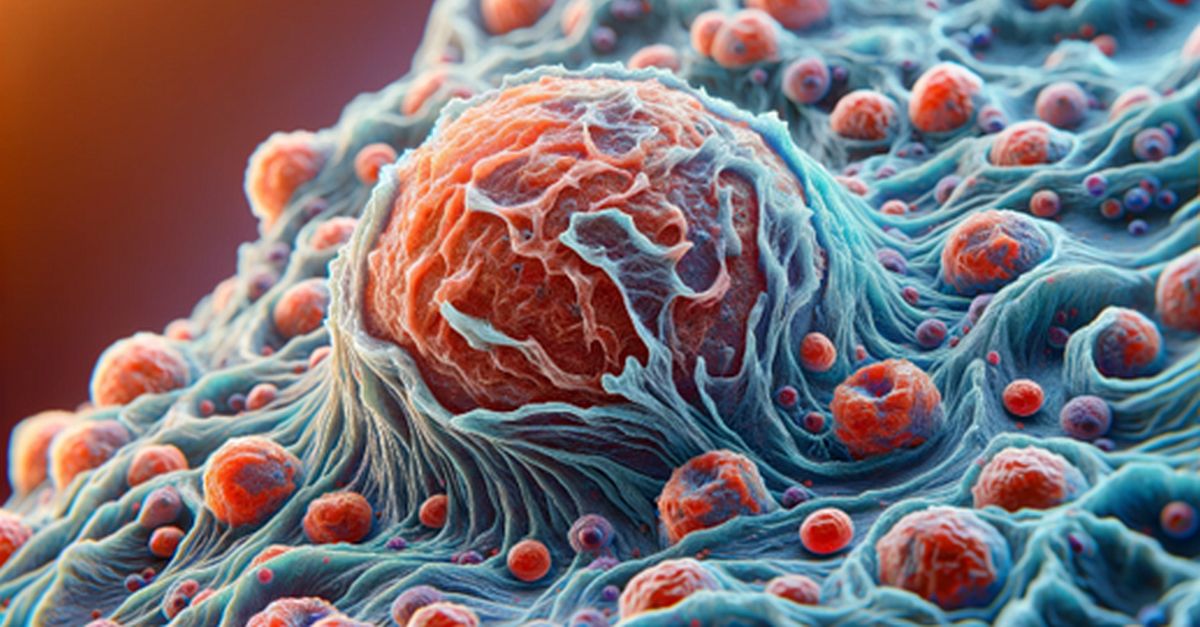 Aptitude Health recently spoke with Marc Thill, MD, PhD, chief physician of the Clinic for Gynecology and Gynecologic Oncology of the Agaplesion Markus Hospital in Frankfurt, Hessen, Germany, to learn his views on recently presented data in breast cancer. Dr Thill’s distinguished career in medicine began with his studies at the Johann Wolfgang von Goethe University in Frankfurt. His practical year was spent at Klinikum Offenbach; he received his medical degree in 1997. He held several positions at Klinikum Offenbach in gynecology and obstetrics before becoming the chief physician at Agaplesion Markus Hospital in 2012. Dr Thill’s expertise includes gynecologic oncology and breast cancer treatment, with leadership roles in various breast and gynecologic centers. He has been extensively involved in clinical trials, research, and teaching, and has numerous publications and memberships in medical societies. Here is a recap of our conversation:
Aptitude Health recently spoke with Marc Thill, MD, PhD, chief physician of the Clinic for Gynecology and Gynecologic Oncology of the Agaplesion Markus Hospital in Frankfurt, Hessen, Germany, to learn his views on recently presented data in breast cancer. Dr Thill’s distinguished career in medicine began with his studies at the Johann Wolfgang von Goethe University in Frankfurt. His practical year was spent at Klinikum Offenbach; he received his medical degree in 1997. He held several positions at Klinikum Offenbach in gynecology and obstetrics before becoming the chief physician at Agaplesion Markus Hospital in 2012. Dr Thill’s expertise includes gynecologic oncology and breast cancer treatment, with leadership roles in various breast and gynecologic centers. He has been extensively involved in clinical trials, research, and teaching, and has numerous publications and memberships in medical societies. Here is a recap of our conversation:
How do you see the area of screening and diagnosis of breast cancer evolving?
More research is needed to support the use of ultrasound fusion technology and fusion techniques. Biopsy is still the gold standard, but we may see increased use of PET/CT [positron emission tomography/computed tomography] scans in the future. To take it a step further, we have to consider ctDNA [circulating tumor DNA] [circulating tumor DNA] and CTC [circulating tumor cells]. This is something we try to implement in the follow-up of our patients with the SURVIVE study in Germany, where we measure ctDNA and CTC levels to get information about recurrence. Up-front use of this technology can determine how much treatment is needed.
What role do you anticipate for artificial intelligence (AI) in the diagnosis of breast cancer?
We cannot ignore the growing role of AI. In the RxPONDER trial, where we tried to find out if there is residual tumor burden in the breast after neoadjuvant chemotherapy and which patients will be able to avoid chemotherapy, there was a false-negative rate of 20%. By using AI and focusing only on triple-negative and HER2 [human epidermal growth factor receptor 2]-positive disease in patients with the highest chance of a pCR [pathologic complete response], we had a predictive negative value of 0%. These results are both promising and convincing.
How are genomic assays used in clinical practice to support treatment decisions and individualize therapy in early breast cancer?
This has been the standard for the past few years. Trials such as the ADAPT trial have led us to use multigene assay as standard practice in node-negative disease. In Germany, we are also able to get this reimbursed in patients who are endocrine positive with 1 to 3 lymph nodes, HER2 negative. In luminal breast cancer and following a short induction course with endocrine treatment, we measure the Ki-67 drop in the multigene assay to decide whether a patient is a candidate for only endocrine treatment. If a response is not big enough, we use the Oncotype DX to decide whether or not to initiate chemotherapy.
At my center we have recruited 230 patients with intermediate-risk disease in the ADAPTcycle trial, where we try replacing chemotherapy with ribociclib.
How important is a multidisciplinary approach in the management of early and advanced breast cancer?
Treatment of breast cancer is getting more and more complex and therefore requires more multidisciplinary care. Following a multidisciplinary approach is very important, although it may occur less often in Germany compared to other countries, because as a gynecologist, I’m able to manage side effects of endocrine treatments, do ultrasound and core biopsy, stereotactic approaches, systemic treatment breast surgery andbreast reconstruction. In the metastatic setting, though, I do still need an interventional radiologist. For a patient with mutations, I contact a colleague from genetics to make sure the patient receives proper counseling, and I may need a spine specialist for surgery of metastasis.
What would you highlight as the most relevant similarities and differences in the management of breast cancer across Europe?
I think surgery and the use of neoadjuvant strategies are quite similar. Neoadjuvant chemotherapy and in vivo sensitivity testing is now standard of care, as well as the use of neoadjuvant approaches as a predictive tool to find out who gets a non-pCR to receive a post-neoadjuvant treatment.
The biggest differences are the variability in access to drugs and diagnostic tools. Access is crucial. . . . I remember when we had access to palbociclib and my colleagues in Italy, France, and Eastern European countries didn’t yet have access to it. Another difference pertains to patient recruitment for research in metastatic disease. In Germany we don’t have the centralization France, Italy or UK have, and we don’t have a center with 4,000/5,000 primary breast cancer patients. The biggest center in Germany has about 1,500 patients, and we are in the top 10 with 670 cases. So, we are limited in recruiting patients in metastatic trials and designing trials where we use next-generation sequencing, for example.
In your opinion, what would be the educational benefits of conducting a multidisciplinary European summit in the management of breast cancer?
This type of scientific exchange is most valuable, both for companies that sponsor the summits and for the colleagues who attend. I was able to attend 2 TME meetings in Las Vegas, and I loved the format. The events I attended were like a “think tank” for both industry and physicians, and I met some people I am still in contact with regarding clinical trial conception. I think it would be beneficial to implement this type of scientific exchange in Europe and give surgeons, oncologists, geneticists, and other specialists the chance to learn from each other.
It would give us the opportunity to meet and talk about the whole treatment strategy.

